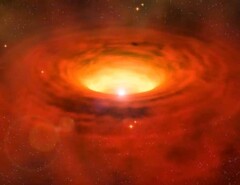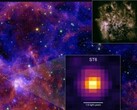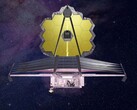First-ever detailed look at a dying star beyond the Milky Way
Stars might appear like constants in the night sky, but they do die. However, astronomers have captured a star in its death throes in close view outside our galaxy. The doomed star is WOH G64, a red supergiant in the Large Magellan Cloud (LMC) about 160,000 light-years from Earth. The photo image was reconstructed with the Very Large Telescope Interferometer (VLTI) at the European Southern Observatory.
An unexpected cocoon of hot, asymmetric dust
While the photo's rarity was spectacular, other surprising discoveries awaited the astronomers. Red supergiants typically have a smooth spherically symmetric dust shell. However, WOH G64 has an elongated, asymmetric cocoon shrouding it. The image has enough resolution to allow researchers to study the circumstellar envelope in detail.
The discovery differs from the conventional view of stars shedding mass before going supernova. The team has suggested that WOH G64 generated a thick new layer of hot, iron-rich silicate dust, which significantly reduced the star’s near-infrared brightness over the last decade.
Signs of instability, or a hidden companion?
Another interesting discovery about the WHO G64 is the possibility of a companion star that has yet to be spotted. This is based on the celestial body’s irregular dimming and asymmetry. However, preliminary findings from the dust structure have to be analysed further before eliminating other scenarios.
Rewriting the final chapter of massive stars
WOH G64 has become the poster child for the chaotic last stages of stellar lifecycles. The results suggest that stars in terminal decline could suddenly produce dust bursts rather than gradual, symmetrical mass loss.























